The Infamous U-2 was not the only aircraft shot out of the Soviet skies that day in May 1960, there was a second parachute floating to earth other than that of Francis Gary Powers.
It was May 1, 1960, and Francis Gary Powers found himself on the ground in a foreign land, surrounded by its inhabitants. Powers had just had his Lockheed U-2 Spy plane suffer structural failure from a near miss of a Soviet SAM (surface-to-air missile) and the aircraft broke apart. Because of the force of the explosion and how it had thrown him forward in the cockpit, he had to manually climb out of the spinning cockpit, not able to use the ejection system, somehow sever his oxygen hose, and escape being hit by any debris. His parachute opened at around 15,000 feet, and he had floated down near a Russian village.
Since the CIA (Central Intelligence Agency) recruited Powers to fly and had failed to teach their U-2 pilots the native language of the countries being overflown, Powers could not understand those around him, nor could they understand him. One of the men, realizing the language barrier, pointed at Powers and then held up two fingers and pointed to the sky. Powers looked up, and noticed a red and white parachute at a very high altitude some distance away. Knowing his aircraft did not contain a second parachute, he indicated to the man that he was alone. Powers theorized in his own mind that the second chute might be part of a rocket system that shot him down and this might be a way of recovering a stage of the rocket.
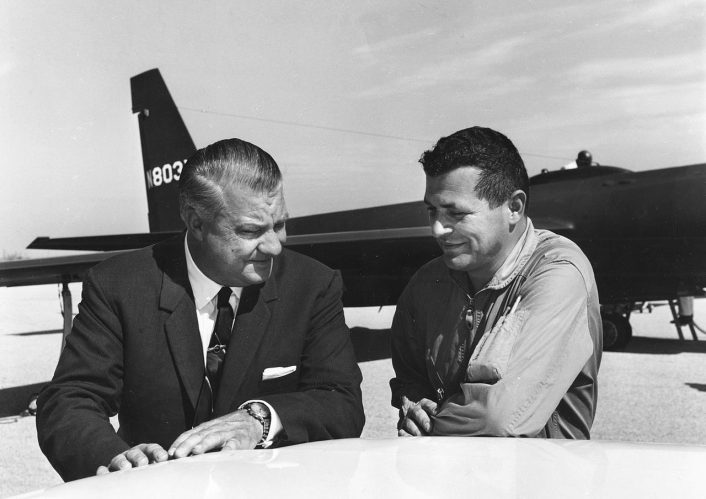
The above incident is chronicled in Francis Gary Powers’ book, Operation Overflight: A Memoir of the U-2 Incident (1970). In the book he describes his recruitment and training, the flight, the shoot down, his subsequent interrogation, trial, and incarceration. Powers also discusses his release on the Glienicker Bridge in the exchange of spies between the United States and the Soviet Union and his subsequent treatment and questioning back home. However, due to the extreme secrecy of the Iron Curtain, Powers had no idea of what had transpired on the Soviet side of the incident that day in May. It turns out his was not the only plane shot down that day.
Thorn in the Side
It was thought because of the extreme altitude the U-2 flew at, it was impervious to Soviet radar, interceptors, anti-aircraft guns, and surface- to-air missile threats. U-2 pilots discovered however, they were being shadowed by lower flying fighters, able to look down and see the contrails at lower altitudes. They now knew they were being tracked by radar, but again, because of the height they flew at, assumed they were safe because the Soviets had nothing that could touch them. So they thought.
The U-2 had been a thorn in the side of the communists, knowing full well it was up there flying with impunity over their territory was infuriating to the Kremlin leadership and the military. The Soviets began working on systems to track and bring down the spy plane. One such system was the S-75 Dvina, now known in the West as the SA-2, surface-to-air missile.
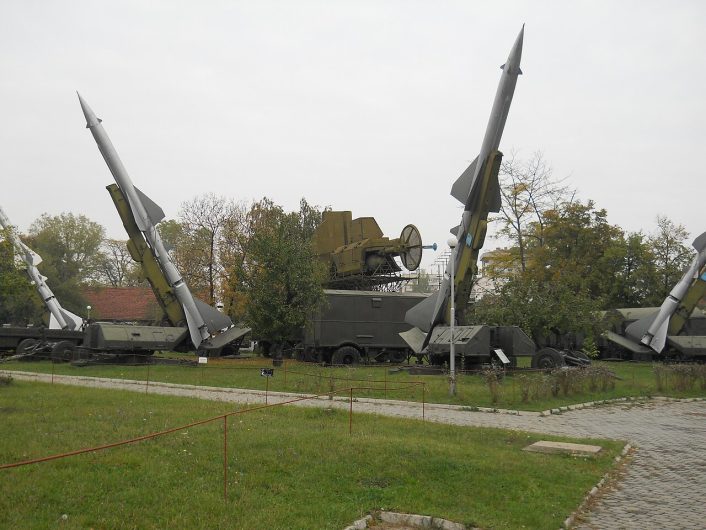
The SA-2
Developed in the 1950’s, the SA-2 Guidline was a ground-launched surface-to-air missile. The V-750 version that hit Powers’ U-2 was the higher altitude variety. It gained its first kill over the skies of China in 1959 downing a Taiwanese RB-57 aircraft at 66,000 feet.
The V-750 version was over 34 ft long, with a 28 in diameter, and weighted in at over 5,000 lbs. It could reach altitudes of over 80,000 ft and the maximum speed was Mach 3.5. The missile was deployed by several Middle East countries, throughout the Communist Bloc, Africa, Southeast Asia, India and Pakistan, and is still in use in many countries to this day. Nicknamed “the flying telephone pole” by United States pilots over Vietnam, it was a constant threat. It also has to its credit the downing of a U-2 over Cuba and several over China.
Soviet Panic
As the Soviet radars tracked the intruding U-2 on that fateful day, as they had tracked previous flights on previous days, frustration and panic set in. The presence of the spy plane not only would bring military secrets to light, but what if the plane could carry an atomic bomb? The Soviet air defense system had been built and deployed for use against fleets of bombers flying at lower altitudes, and they had no interceptors or fighters that could reach the operating height of the U-2. New aircraft were rushed into development and production as Soviet Premier Nikita Khrushchev demanded an answer. One such aircraft was the Sukhoi Su-9.
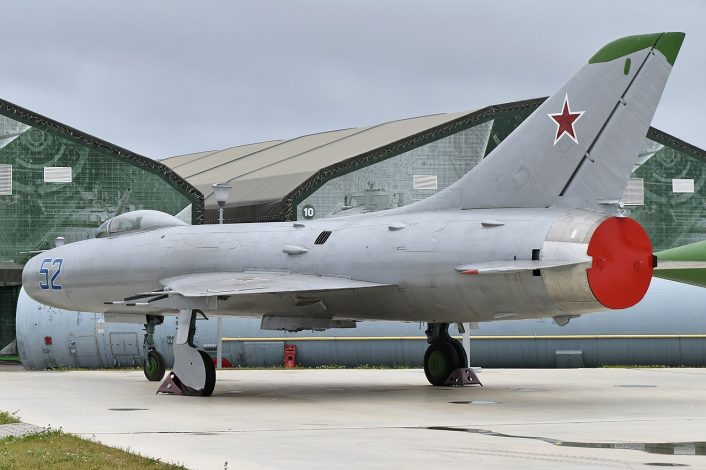
In an act of desperation, the Soviets located a Su-9 pilot, Captain Mentyukov, as being May 1st a holiday in the Soviet Union many personnel were away from their duty stations. Captain Mentyukov was ordered to take off in an unarmed Su-9 without his flight gear, fly at full afterburner, intercept the U-2, and ram it. Realizing this was a suicide mission, Captain Mentyukov asked his comrades to care for his expecting wife and mother.
Mentyukov took to the air in pursuit and according to Sergi Khrushchev, the son of the Soviet Premier, reached the altitude of Powers’ aircraft from the rear. The Sukhoi has a service ceiling of around 60,000 ft, and the U-2 was at its assigned altitude of around 70,000 ft, but the Soviets claimed they had learned to fly to top speeds, using the energy to launch themselves upward to higher altitudes, although the fighters were extremely difficult to control in the stratosphere. In the words of Sergi Khrushchev, “Two grains of sand would have to meet in the infinite skies” for this plan to work. It didn’t, the Soviet pilot missed and the Su-9, low on fuel, wouldn’t have another chance and landed.
After the Su-9 had left the area, MiG 19’s were scrambled. With no chance of intercepting the U-2 and with a service ceiling of only 57,000 ft, it was another desperation attempt by the Soviets. The U-2 had flown into range of the SA-2 batteries and they fired. According to Sergi Khrushchev, only one missile was fired out of a planned three, and at 8:53 A.M. there was a faint sound of an explosion. The target was gone from the radar screen. The Soviets doubting their lucky hit with just one missile fired three more missiles at the disintegrating aircraft. In the fog of war and a series of disappearing and reappearing radar contacts, nervousness, panic, and doubt, it appears the Soviets may have fired up to fourteen missiles that day. What happened next led to the second parachute.
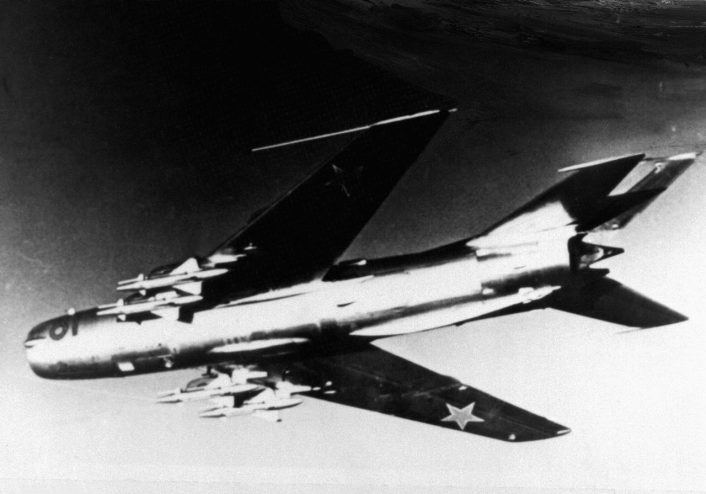
Two MiG-19s flew the area unable to locate the U-2. One was piloted by Capt. Boris Ayvazyan and the other Senior Lt. Sergi Safronov. Neighboring missile batteries picked up the two aircraft on radar at a lower altitude. But the chain of command insisted there were no Soviet aircraft in the area. In addition, since it was May 1st and a holiday, the Soviet aircraft had not had the transponder codes changed as they normally would have at the first of the month, and could not be identified and friendly. Ayvazyan’s MiG was low on fuel and he made a steep dive to head back to base, but Lt. Safronov’s plane was hit by the missiles. The second parachute now opened.
The MiG went down and local residents saw the parachute, rushed to the scene, but Safronov had a deep wound in his side and was dead. The Soviets had shot down one of their own. The event was covered up, a false story was generated by Soviet brass that actually two Su-9’s had been sent up to intercept, and were called back but one pilot announced he was attacking the U-2 when the missiles arrived, and since the planes were so close together, the friendly plane was also destroyed. This was the story until the collapse of the Soviet Union.
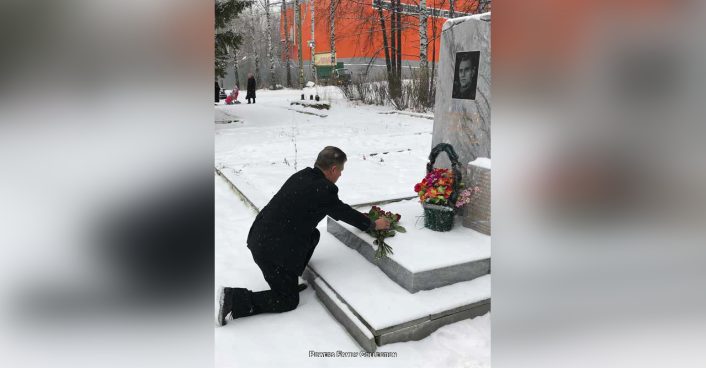
Sons of the Cold War
We now know that Lt. Safronov was flying a MiG 19 and shot down at a much lower altitude. In Spy Pilot: Francis Gary Powers, the U-2 Incident, and a Controversial Cold War Legacy (2019), by Francis Gary Powers Jr., and Keith Dunnavant, we learn of the son of Safronov reaching out to Powers Jr.:
After the breakup of the Soviet Union, Russian authorities finally acknowledged a long concealed instance of friendly fire: One of the MiG fighters dispatched to try to shoot Powers out of the sky had been hit by an SA-2 missile, killing the pilot, Sergi Safronov. Always determined to chase every lead, I was happy when the pilot’s son contacted me through The Cold War Museum. We shared a long conversation.
He said his mother did not blame my father for her husband’s death. She understands that her husband was following orders and my father was following orders, and that it was not my father’s fault that her husband had died. I was very touched by this.
I wanted to show my respects to the MiG pilot, so on the day after attending a conference, as snow drifted from the sky, I walked up the steps to the granite memorial to the fallen Soviet hero, adorned with his photograph and a portion of the plane’s tail section.
They told me not to smile. If I had smiled, it would be an insult to the Russian people.
Dressed in a suit and with a very solemn look on my face, I dropped to one knee and placed ten red roses in tribute.
I lingered for a few moments, thinking about what the pilot’s family must have gone through, how they had surely struggled to deal with the loss, and wondering how they suffered for all those years not knowing the truth of how he died. (pp. 261-262)
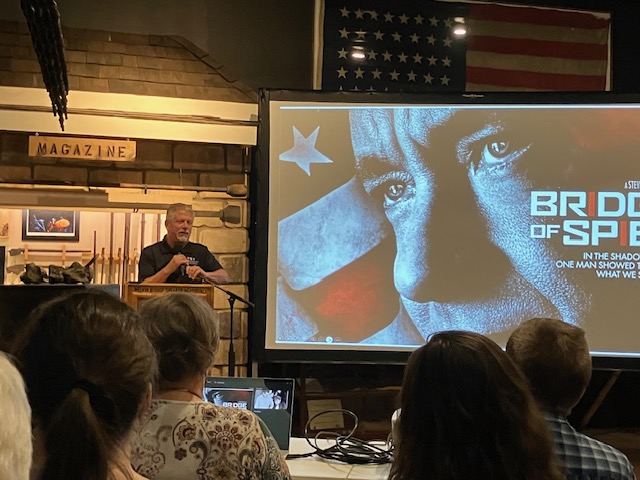
The Author and The Aviationist would like to express sincere gratitude to Francis Gary Powers Jr. for his assistance and generosity in the use of text and image.

